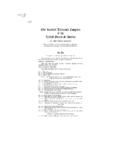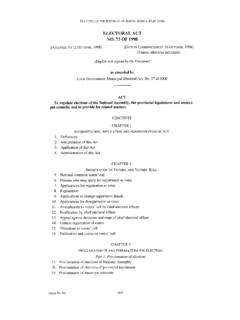Transcription of Compulsory Registration of Marriages - Law …
1 GOVERNMENT OF INDIA LAW commission OF INDIA Report Compulsory Registration of Marriages July, 2017 ii iii Report Compulsory Registration of Marriages Table of Contents Chapter Title Page I Introduction and Background 1-6 II marriage Registration : A Global Overview 7-9 III marriage Registration : Indian Legislative Framework 10-18 IV Judicial Pronouncements 19-21 V Revisiting the Reports of the Law commission of India 22-24 VI Need for a Central Legislation to Regulate Compulsory Registration of Marriages 25-31 VII Feasibility of Information Technology-Enabled Registration 32-33 VIII Conclusions and Recommendations 34-38 CHAPTER I Introduction and Background Since independence, numerous initiatives have been taken to address the issue of gender inequality. Reform initiatives taken so far have succeeded to a large extent, however, child Marriages , bigamy and gender violence continue to persist in our society, despite legislations prohibiting and penalising such Several disputes are pending before the courts regarding matrimonial status of the Women are often denied the status of wife due to absence of record proving a valid marriage .
2 The courts have time and again emphasised on making Registration of marriage Compulsory , to prevent denial of status to women and to children born out of Instances of marriage fraud have also come to light in recent times. In the absence of Compulsory Registration , women are duped into marrying without performance of the conditions of a valid marriage . This deprives women of societal recognition and legal security. Such fraudulent Marriages are especially on rise among non-resident Compulsory Registration can serve as a means to ensure that conditions of a valid marriage have been performed. The Births, Deaths and Marriages Registration Act, 1886 provided for voluntary Registration of births and deaths only for certain classes of people and also made a provision for effective Registration of Marriages under the Indian Christian Marriages Act, 1872 and the Parsi marriage and Divorce Act, 1936.
3 The said Acts 1 30% women married under age 18 , The Indian Express (May 31, 2016). 2 Kerala tops states with pending matrimonial cases in family courts , The Indian Express (Jan 8, 2017). 3 See Kanagavalli v. Saroja, AIR 2002 Mad 73. 4 In view of such fraudulent Marriages , Punjab made Registration of Marriages Compulsory through the Punjab Compulsory Registration of Marriages Act 2012. 2 have been subjected to revisions and amendments from time to time since independence. While provisions for Registration exist under various laws- such as the Hindu Marriages Act, 1955, the Special Marriages Act, 1954, the Parsi Marriages and Divorce Act, 1936 and the Indian Christian Marriages Act, 1872, however, there is no provision that provides for simply keeping a record of all Marriages and is available to any and every individual in the country regardless of religion, region or customs.
4 The Special marriage Act 1954, laid down a procedure for Registration but the Act was primarily intended to enable couples to opt out of personal laws, but this did not, however, imply that the couple has opted out of religion. It simply meant that religion has no relevance for Registration of a marriage under this Act. Though the Registration of Births and Deaths (Amendment) Bill, 1969 was introduced to include the Registration of Marriages , it did not cover all citizens. These amendments applied only to the Christian community and it once again remained short of becoming a national legislation. India signed the Convention on the Elimination of All Forms of Discrimination against Women on 30 June 1980 and ratified it on 9 July 1993. After that India was expected to submit its report to the Committee on Elimination of Discrimination against Women (CEDAW). The first report was submitted in 1998.
5 The combined fourth and fifth periodic reports were submitted in 2012. The Committee, in its concluding observations on this report in the year 2014, in para 39, urged India to speedily enact legislation to require Compulsory Registration of all Marriages and simultaneously requested to consider to withdraw its declaration to Article 16 (2) of the Convention. 3 Article 16 of the Convention pertains to Equality in marriage and family relations . The Committee has expressed its concern in para 40 about the co-existence of multiple legal systems with regard to marriage and family relations in India which apply to the different religious groups and which results in the deep and persistent discrimination against women. The National commission of Women had offered a concrete solution to a number of problems arising out of non- Registration of Marriages by drafting a Compulsory Registration of Marriages Bill, 2005 seeking amendment to the Act of 1886.
6 In 2007 the Committee on Empowerment of Women, relying upon the NCW s Bill observed that irrespective of religion, Registration of Marriages should be made The report shed light on the plight of Indian women whose husbands, in a number of cases refused to acknowledge their marriage before contracting a second marriage or leaving their former wives altogether and refusing them maintenance, etc. The Committee, therefore, desired that the Government shall make Registration of all Marriages mandatory, making the procedure simpler, affordable and accessible. In 2006, the Supreme Court in Seema v. Ashwani Kumar & observed that Marriages of all persons who are citizens of India belonging to various religions should be registered compulsorily in their respective States, where the marriage is solemnised. Further, as and when the Central Government enacts a comprehensive Statute, the same shall be placed before the Court for scrutiny.
7 The judgment also referred to the Bill produced by the National commission of Women. 5 Committee on Empowerment of Women (2006-2007), Ministry of Overseas Indian Affairs and Ministry of External Affairs (Fourteenth Lok Sabha) Twelfth Report on the Plight of Indian Women deserted by NRI Husbands (Aug. 2007). 62006 (2) SCC 578. 4 In February 2008, the 18th Law commission of India, in its 205th Report titled Proposal to Amend the Prohibition of Child marriage Act, 2006 and Other Allied Laws recommended that Registration of Marriages within a stipulated period, of all the communities, viz. Hindu, Muslim, Christians, etc. should be made mandatory by the Central Government. Again the commission in its 211th Report7 proposed an enactment of a marriage and Divorce Registration Act to be made applicable to the whole of India and to all citizens.
8 Accordingly, it recommended that the Births and Deaths Registration Act, 1886 be repealed and Births and Deaths Registration Act, 1969 be re-named as Births, Deaths and Marriages Registration Act, 2012 . In 2012, another Bill was prepared and then tabled in parliament in view of the observations made by the Supreme Court in the aforementioned case. This Bill was introduced to amend the Registration of Births and Deaths Act, 1969 to provide for Compulsory Registration of Marriages irrespective of religious denominations of the parties. The Amendment Bill of 2012 was passed by Rajya Sabha on However, the said Bill could not be taken up for consideration in the Lok Sabha and lapsed on the dissolution of the Fifteenth Lok Sabha on the 21st February, 2014. While considering the Bill on a reference from the Rajya Sabha, the Standing Committee hoped that the Bill would act as a milestone to protect women in matters of maintenance and property rights in addition to putting an effective check on bigamous relationships.
9 7 Law commission of India, 211th Report on Laws on Registration of marriage and Divorce A proposal for Consolidation and Reform (Oct., 2008). 5 The Legislative Department, on the basis of earlier Bill, prepared a fresh draft Bill on the Registration of Birth and Death (Amendment) Bill, 2015. The Department of Legal Affairs, vide its letter dated 16 February 2017, has forwarded a request received from the Legislative Department, asking the commission to examine and submit a report with regard to various issues relating to Compulsory Registration of Marriages as below: (i) Whether to pursue amendments in the Registration of Births and Deaths Act, 1969 as per the Registration of Births and Deaths (Amendment) Bill, 2015 or to consider separate standalone legislation to provide for Compulsory Registration of Marriages , in order to bring uniformity in all laws, including the Central and State Personal Laws; (ii) Whether the amendments are required in the Central Laws, including the Hindu marriage Act, 1955 (25 of 1955), the Parsi marriage and Divorce Act, 1936 (3 of 1936) and the Indian Christian marriage Act, 1872 (15 of 1872).
10 (iii) IT enablement of Registration of all Marriages ; (iv) Such other matters as may be considered necessary. This Report proposes to amend the Registration of Births and Deaths Act, 1969 to include the Compulsory Registration of Marriages within its purview. In brief, it marriage includes marriage solemnised between a couple belonging to any caste or religion or tribe under any law or custom or usage in any form or manner recognised by law or marriage registered under any law including re- marriage . Registration of marriage would in fact, help in better implementation of already existing laws that aim at preventing child marriage et al. It would also aid in eliminating practices such early 6 and forced It can be helpful in achieving gender equality and empowering women. The recommendation is not aimed at eliminating diversity of personal laws and instead accepts prevailing customs/ or personal laws concerning solemnisation of marriage ; provided that these Marriages are registered under the Compulsory Registration of Births Deaths and Marriages Registration Act or any other law for the time being in force in the State.



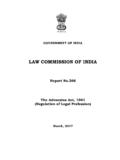
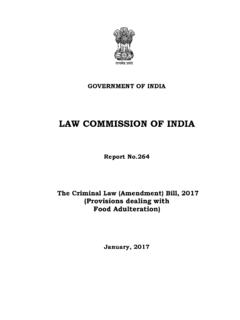




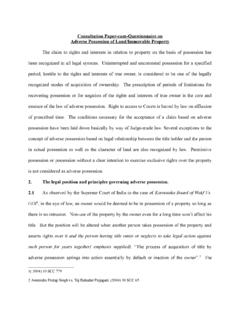
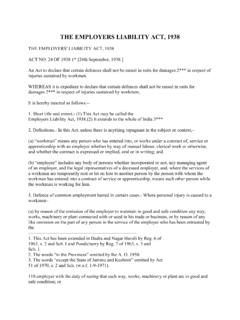
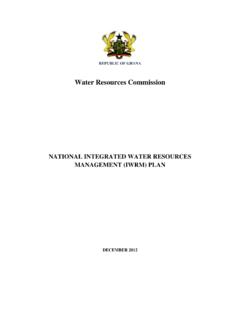
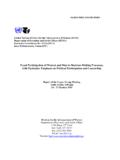

![Financial and Fiscal Commission Act [No. 99 of 1997]](/cache/preview/2/e/4/4/4/f/7/b/thumb-2e444f7bf6f0028c07407f3c8a85bdd5.jpg)
